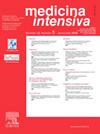Nuevas técnicas ecográficas. Presente y futuro
IF 3.1
4区 医学
Q2 CRITICAL CARE MEDICINE
引用次数: 0
Abstract
The present study highlights the advances in ultrasound, especially regarding its clinical applications to critically ill patients.
Artificial intelligence (AI) is crucial in automating image interpretation, improving accuracy and efficiency. Software has been developed to make it easier to perform accurate bedside ultrasound examinations, even by professionals lacking prior experience, with automatic image optimization. In addition, some applications identify cardiac structures, perform planimetry of the Doppler wave, and measure the size of vessels, which is especially useful in hemodynamic monitoring and continuous recording. The «strain» and «strain rate» parameters evaluate ventricular function, while «auto strain» automates its calculation from bedside images. These advances, and the automatic determination of ventricular volume, make ultrasound monitoring more precise and faster. The next step is continuous monitoring using gel devices attached to the skin.
新的超声技术。现在和未来
本研究重点介绍了超声技术的进展,特别是其在危重病人中的临床应用。人工智能(AI)在自动化图像解释、提高准确性和效率方面至关重要。软件已经开发,使其更容易进行准确的床边超声检查,甚至由专业人员缺乏先前的经验,自动图像优化。此外,一些应用识别心脏结构,执行多普勒波的平面测量,并测量血管的大小,这在血流动力学监测和连续记录中特别有用。“应变”和“应变率”参数评估心室功能,而“自动应变”则根据床边图像自动计算。这些进步,以及心室容积的自动测定,使超声监测更加精确和快速。下一步是使用附着在皮肤上的凝胶装置进行持续监测。
本文章由计算机程序翻译,如有差异,请以英文原文为准。
求助全文
约1分钟内获得全文
求助全文
来源期刊

Medicina Intensiva
CRITICAL CARE MEDICINE-
CiteScore
2.70
自引率
20.00%
发文量
146
审稿时长
33 days
期刊介绍:
Medicina Intensiva is the journal of the Spanish Society of Intensive Care Medicine and Coronary Units (SEMICYUC) and of Pan American and Iberian Federation of Societies of Intensive and Critical Care Medicine. Medicina Intensiva has become the reference publication in Spanish in its field. The journal mainly publishes Original Articles, Reviews, Clinical Notes, Consensus Documents, Images, and other information relevant to the specialty. All works go through a rigorous selection process. The journal accepts submissions of articles in English and in Spanish languages. The journal follows the publication requirements of the International Committee of Medical Journal Editors (ICMJE) and the Committee on Publication Ethics (COPE).
 求助内容:
求助内容: 应助结果提醒方式:
应助结果提醒方式:


